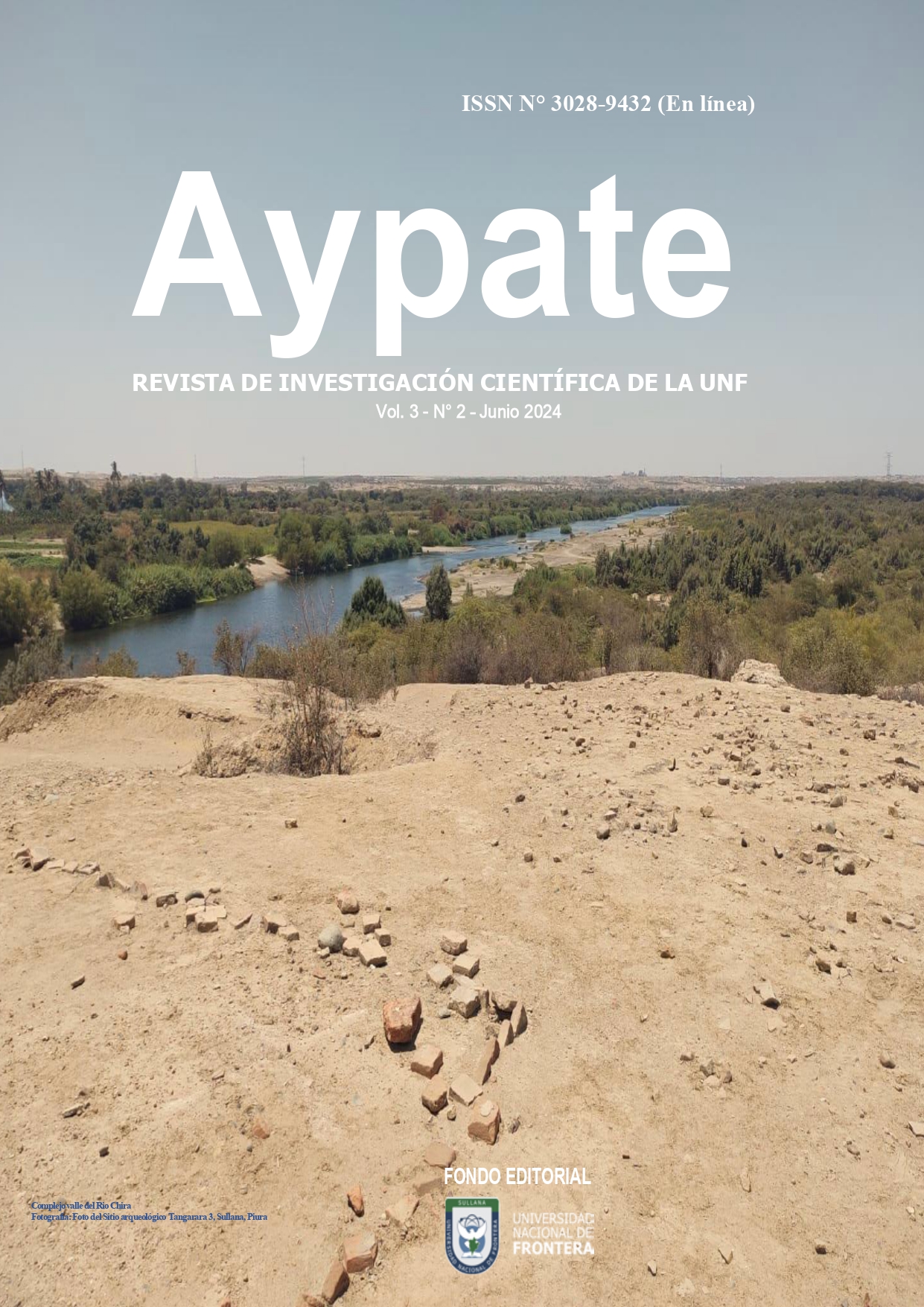Análisis preliminar sobre las periodificaciones en la datación cronológica en la costa norte del Perú.
DOI:
https://doi.org/10.57063/ricay.v3i2.94Keywords:
Culture, Chronology, Dating, SamplesAbstract
Chronological dating is an important component of the cultural periodization of a territory, however, it is necessary to be certain to establish chronologies, therefore it is advisable to use absolute dating that can be developed in a laboratory. The objective of the work was to analyze the dating to determine the chronology proposed in the archaeological sites that establish the periodization of the occupation of human groups on the northern coast of Peru. Regarding the research methodology, it was based on a quantitative approach, of the basic type, and a non-experimental design. Regarding the results, we have that chronological dating has an incidence of 18.42% in the year 700 AD, where cultures such as Mochica, Sican and Vicus coexist on the northern coast. Regarding the samples, we have that 31.58% do not indicate what type of sample is selected for dating, while 21.05% of wood is sent to the laboratory as recurring material for researchers. Regarding the cross tables, we have that 13.16% of the samples are wood and also charcoal in the same proportion. Likewise, in cross tables at the level of occupation of the territory, there are cultures such as Chimú in the province of Trujillo, Tanguche in the province of Santa, Chusis in the province of Sechura and Paita in the province of Paita, all at 100%. At the conclusion level, it is important to indicate that in the selected works, we are called to reflection by the absence of identification of the materials that must be selected to be analyzed in the laboratory.
References
Del Águila, C. (2010). La vigencia de un método en arqueología: sobre la propuesta de periodificacion cultural del área andina de Jhon H. Rowe. Revista Arqueología y Sociedad, 21, 109-118 DOI: https://doi.org/10.15381/arqueolsoc.2010n21.e12280
Gonzalez, D. Paucar, L. y Velásquez, O. (2024). Arqueología molecular, ph adobe Tallan con presencia de microorganismos para conservación preventiva, Sitio Arqueológico Tangarara 3. Revista Aypate, 3 (1) 19-34
Gonzalez, D. (2023). Evaluación preliminar de lesiones físicas en cerámica Tallan Museo en Tangarara 2023. Revista Aypate, 2 (3) 103-111
Gonzalez, D. (2023). Caracterización preliminar del estilo cerámico cultura Tallan bajo conservación preventiva Museo de Arqueología e Historia Tangarara 2023. Revista Aypate, 2 (1) 27-41
González, D. (2021). Modelo de investigación científica en arqueología: diseño teórico y diseño metodológico para proyectos en el Perú. Revista Arqueología y Sociedad, 34, 211-223- http://doi.org/10.15381/arqueolsoc.2021n34.e14136 DOI: https://doi.org/10.15381/arqueolsoc.2021n34.e14136
Hernández, R. y Mendoza, C. (2018). Metodología de la investigación las rutas cuantitativa, cualitativa y mixta. México: McGraw Hill
Meneses, J. (2020). El mundo ceremonial de Chan Chan, investigaciones en Huaca Toledo. (Rengifo, C Edit). Chan Chan esplendor y Legado. Trujillo: Dirección Desconcentrada de Cultura La Libertad.
Muntane, J. (2010). Introducción a la investigación básica. RADP ONLINE, 33 (3) 221-227
Ramón, G. (2005). Periodificacion en arqueología peruana: genealogía y aporía. Boletín del Instituto de Estudios Andinos, 34 (1) 5-33 DOI: https://doi.org/10.4000/bifea.5567
Ramón, G. (1994). Periodificacion en la Arqueología Peruana. Revista Investigación CEAR, 4, 42-70
Renfrew, C. y Bahn, P. (2013). Arqueología, teoría, métodos y práctica. Madrid: Editorial Akal
Tantalean, H. (2023). Más allá de los horizontes y las etapas: una propuesta de periodificación para la arqueología peruana. Revista del Instituto Seminario de Historia Rural Andina, 11, 107-135 https://doi.org/10.15381/ishra.n11.27124 DOI: https://doi.org/10.15381/ishra.n11.27124







